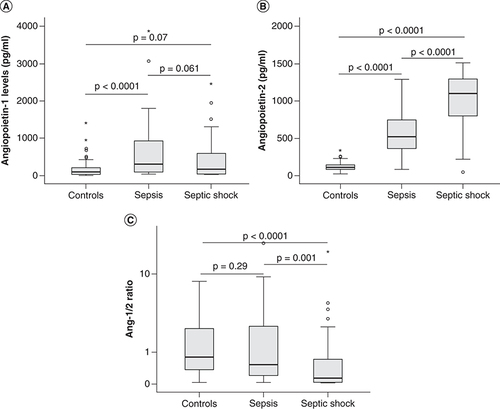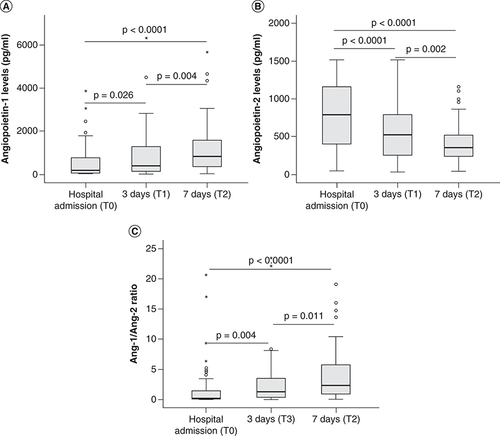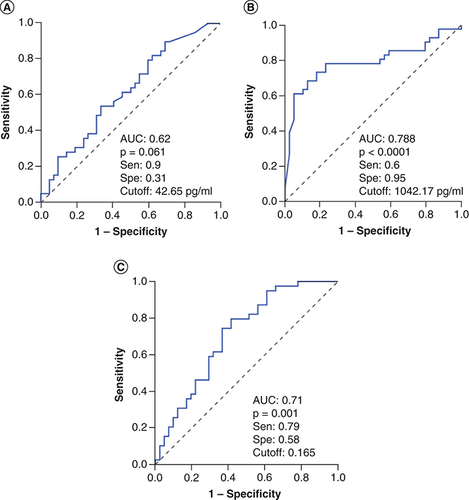Figures & data
Table 1. Characteristics of sepsis patients and controls at hospital admission.
(A) The levels of angiopoietin-1 (B) and angiopoietin-2 were measured in the serum samples from sepsis patients, those with septic shock at hospital admission, as well as in control individuals. (C) The ratios of angiopoietin-1 to angiopoietin-2 levels (Ang-1/Ang-2 ratio) were calculated for each patient and control individual and were compared between groups.
p values were calculated by using the Mann-Whitney U test.

(A) The levels of angiopoietin-1 (B) and angiopoietin-2 were measured in the serum samples from sepsis patients, those with septic shock at different time points (hospital admission, 3 and 7 days after hospital admission). The ratios of angiopoietin-1 to angiopoietin-2 levels (Ang-1/Ang-2 ratio) were calculated for each patient and control individual and were compared between groups (C). p values were calculated by using the Mann-Whitney U test.



